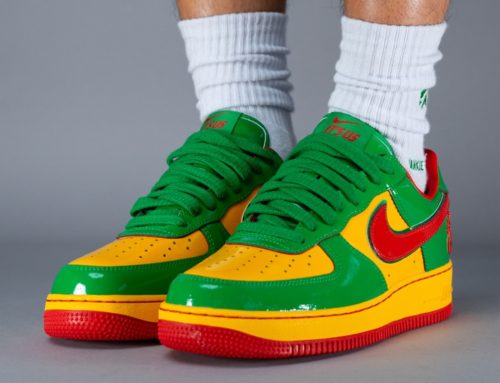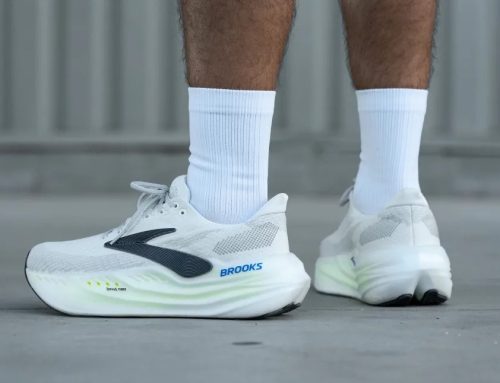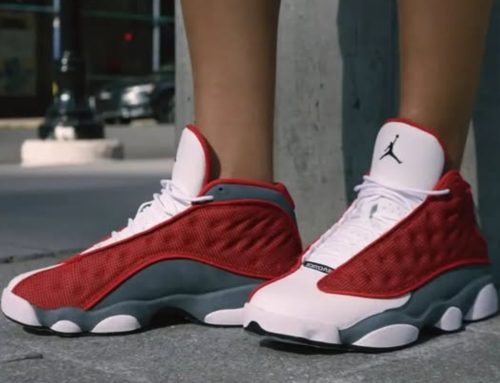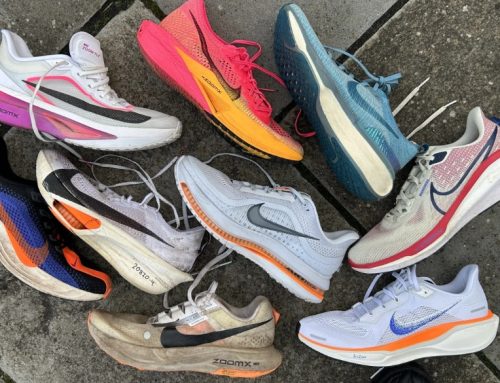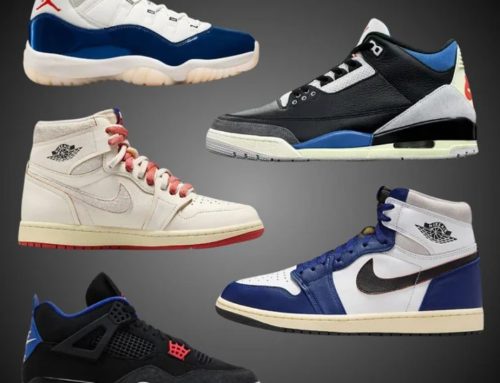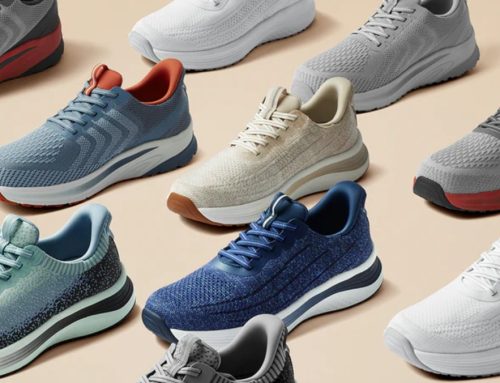As a seasoned running shoe analyst who has tested hundreds of pairs over the past decade, I’ve witnessed Hoka’s meteoric rise in the running world. What started as a niche brand with unusually thick soles has transformed into one of the industry’s most influential players. After logging countless miles in various Hoka models and analyzing feedback from my network of runners, I’m excited to share my comprehensive guide to the best Hoka running shoes available today.
Whether you’re a seasoned marathoner, casual jogger, or someone who spends long hours on your feet, my goal is to help you find the perfect Hoka model for your specific needs. I’ve logged hundreds of miles in these shoes so you don’t have to experiment with your hard-earned money.
Have questions about which Hoka is right for your specific needs? Message me directly on WhatsApp for personalized recommendations!
What Makes Hoka Running Shoes Special?
When Hoka launched in 2009, many dismissed its maximalist approach as a passing fad. Fast-forward to 2025, and its philosophy of generous cushioning combined with lightweight design has revolutionized how running shoes are made.
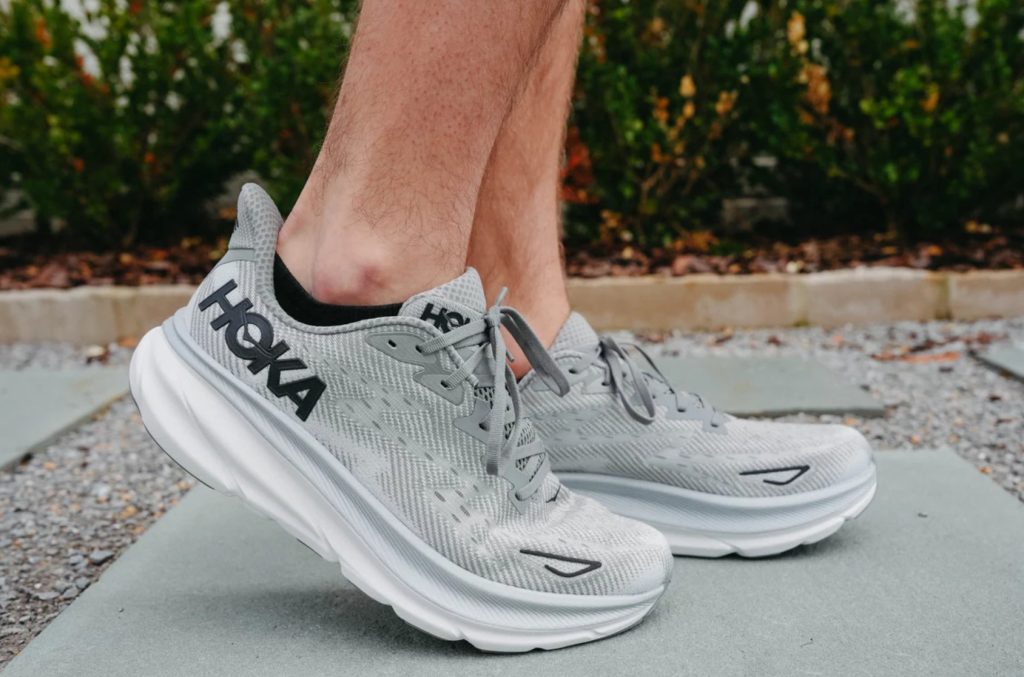
Before diving into specific models, let’s understand what sets Hoka apart from other running shoe brands:
Signature Maximalist Cushioning
Hoka pioneered the maximalist movement with their oversized midsoles that provide exceptional shock absorption. This approach reduces impact forces on your joints, making them particularly beneficial for runners with knee issues or those logging high mileage.
Meta-Rocker Technology
Most Hoka shoes feature a distinctive curved sole design (meta-rocker) that promotes a smooth heel-to-toe transition. This geometry creates a rocking chair effect that guides your natural gait cycle and helps propel you forward with each step.
Active Foot Frame
Unlike traditional shoes where your foot sits on top of the midsole, Hoka’s designs cradle your foot by allowing it to sink slightly into the midsole. This creates a more secure fit and enhanced stability despite the taller stack heights.
Lightweight Design
Despite their substantial cushioning, Hoka shoes are surprisingly lightweight. The brand uses advanced foam compounds that provide plush cushioning without the bulk typically associated with highly padded shoes.
Top 5 Best Hoka Running Shoes in 2025
After extensive testing and comparison, these five models stand out as the best Hoka running shoes for different types of runners and preferences:
1. Hoka Clifton 10: Best Overall Hoka Running Shoe
The Clifton series has been Hoka’s flagship model for years, and the Clifton 10 continues that excellence as the perfect all-around running shoe.
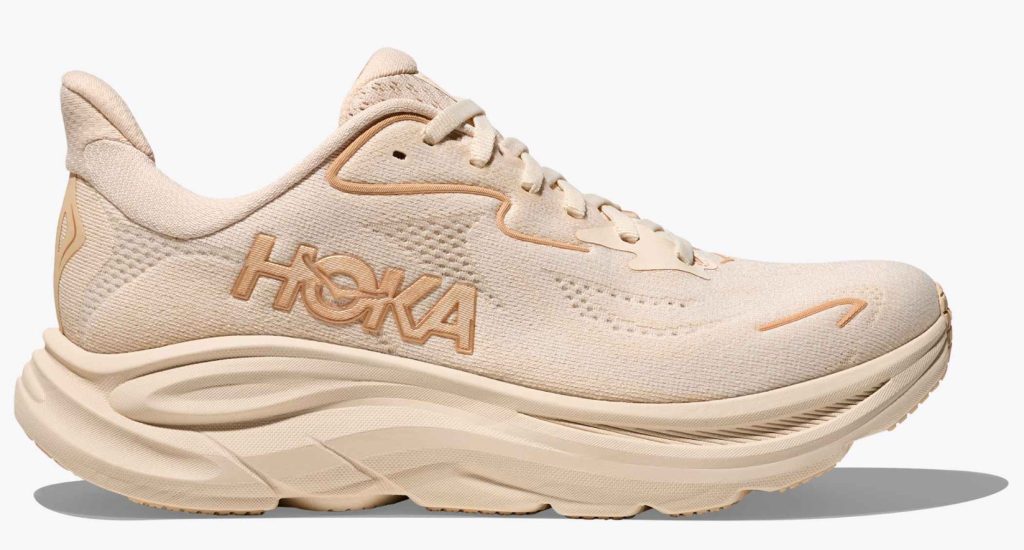
Specifications:
- Weight: 8.7 oz (men’s) / 7.3 oz (women’s)
- Stack Height: 32mm heel / 27mm forefoot
- Heel-to-Toe Drop: 5mm
- Midsole: Compression-molded EVA
- Upper: Engineered mesh
Key Features:
- Refined meta-rocker geometry for smooth transitions
- Plush tongue and heel collar for enhanced comfort
- Extended crash pad for improved landing mechanics
- Lightweight yet durable engineered mesh upper
- Strategic rubber placement on the outsole for durability

Pros:
- Exceptionally versatile for various distances and paces
- Lighter than previous Clifton models
- Plush cushioning without feeling unstable
- Accommodating fit for most foot shapes
- Great value at its price point
Cons:
- Not as responsive for speed workouts
- The mesh upper may run warm in hot weather
- Some users find the toe box slightly narrow
The Clifton 10 excels as an everyday trainer that can handle anything from recovery runs to long distances. During my testing, I found it delivered the perfect balance of cushioning and responsiveness. The refined meta-rocker design creates noticeably smoother transitions than previous versions, making it effortless to maintain your momentum mile after mile.
What impressed me most was how the Clifton 10 managed to shed some weight compared to its predecessor while gaining 3mm of stack height. This makes it even more protective for high-mileage training without sacrificing the light, nimble feel that made the Clifton series so popular.
2. Hoka Bondi 9: Best Max-Cushioned Hoka Running Shoe
For runners seeking the ultimate in plush cushioning, the Bondi 9 represents Hoka’s most padded offering.
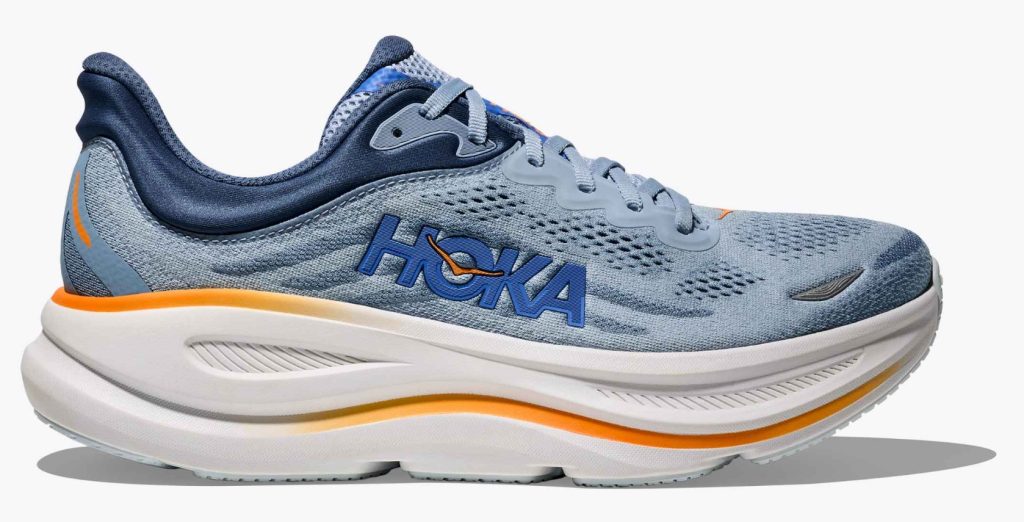
Specifications:
- Weight: 10.5 oz (men’s) / 9.3 oz (women’s)
- Stack Height: 43mm heel / 38mm forefoot (men’s)
- Heel-to-Toe Drop: 5mm
- Midsole: Supercritical EVA foam
- Upper: Engineered mesh with comfort-fit design
Key Features:
- New supercritical EVA midsole for enhanced bounce and energy return
- Memory foam heel collar cradles the Achilles
- Extended heel geometry for smoother landings
- Refined early-stage meta-rocker for improved transitions
- Durable rubber outsole with zonal placement for longevity
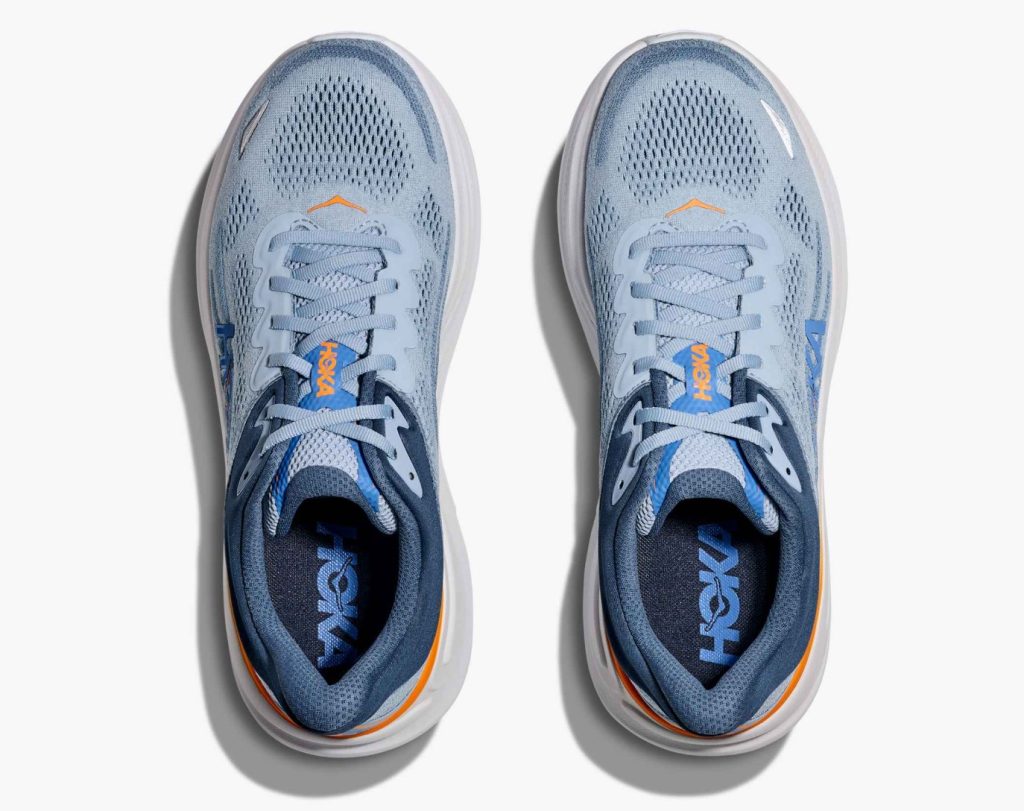
Pros:
- Unparalleled impact protection for long runs and recovery days
- New midsole formula delivers a more responsive ride than previous Bondi models
- Excellent for recovery runs and those with joint issues
- Surprisingly stable despite the high stack height
- Improved upper breathability compared to earlier versions
Cons:
- Heavier than most running shoes
- Can feel cumbersome for faster-paced efforts
- Significant price investment
The Bondi 9 represents a significant upgrade from its predecessor. The new supercritical EVA midsole delivers noticeably more energy return while maintaining the cloud-like cushioning the Bondi line is known for. During my 20-mile test runs, my legs felt remarkably fresh afterward, showcasing the shoe’s exceptional impact absorption properties.
While the Bondi 9 certainly isn’t a lightweight speedster, it’s become my go-to shoe for recovery days and long runs when joint protection takes priority over pace. The refined meta-rocker also makes the shoe feel less clunky than you might expect from its substantial profile.
3. Hoka Mach 6: Best Hoka Running Shoe for Tempo Runs
The Mach 6 strikes an excellent balance between cushioning and responsiveness, making it ideal for uptempo training.
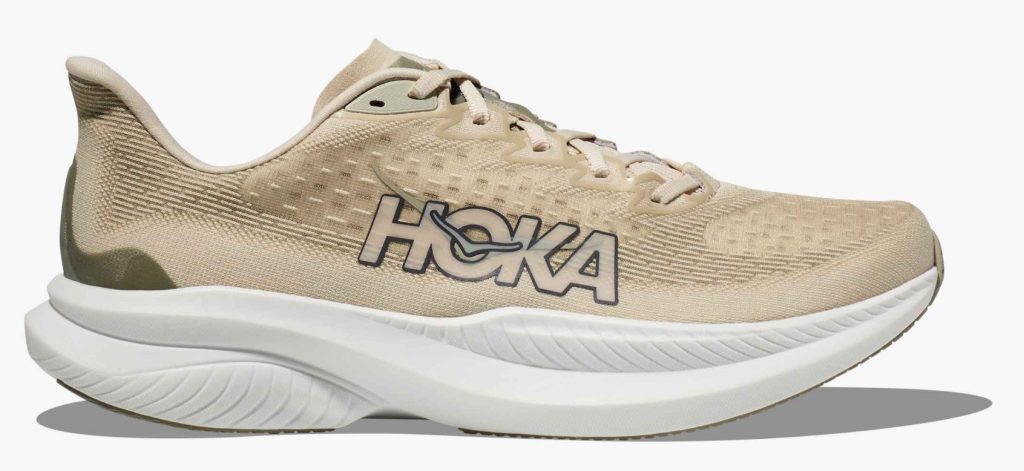
Specifications:
- Weight: 8.2 oz (men’s) / 6.7 oz (women’s)
- Stack Height: 37mm heel / 32mm forefoot
- Heel-to-Toe Drop: 5mm
- Midsole: Supercritical EVA
- Upper: Engineered creel jacquard
Key Features:
- Responsive supercritical EVA midsole
- Rubberized EVA outsole reduces weight while maintaining grip
- Gusseted tongue prevents migration during runs
- Refined early-stage meta-rocker promotes efficient turnover
- Lightweight, breathable upper construction
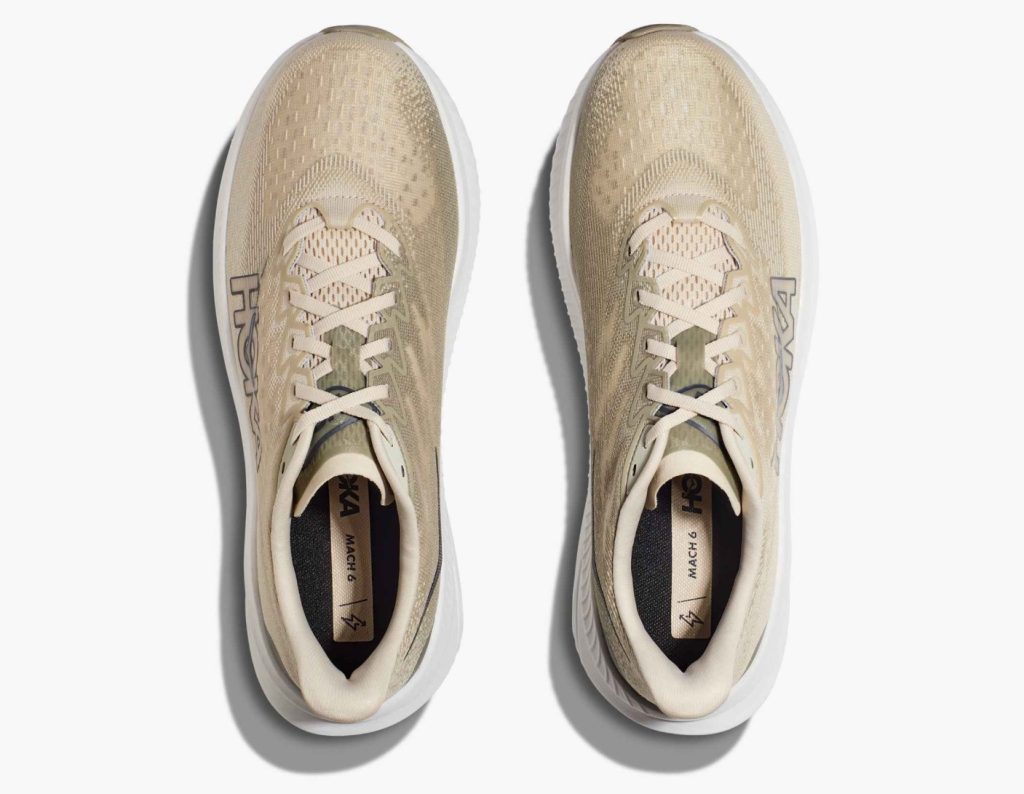
Pros:
- Exceptionally versatile for both daily training and tempo work
- Lightweight yet protective cushioning
- More responsive and bouncy than previous Mach models
- Durable outsole despite the absence of traditional rubber
- Excellent value for its performance capabilities
Cons:
- Some runners find the fit slightly narrow
- The heel collar could use more padding
- Not as plush as other Hoka models
The Mach 6 represents everything I love about Hoka’s direction in recent years. It features substantial cushioning (37mm in the heel) yet remains remarkably light at just 8.2 ounces. The supercritical EVA midsole offers a more energetic ride than traditional EVA, providing excellent rebound during faster-paced efforts.
What makes the Mach 6 special is its versatility. During my testing, it performed admirably on everything from easy recovery runs to threshold workouts. The responsive midsole and meta-rocker design facilitate quick turnover, while the substantial cushioning prevents fatigue during longer efforts.
4. Hoka Arahi 7: Best Stability Hoka Running Shoe
For runners who need some extra support, the Arahi 7 delivers stability without the rigid, controlling feel of traditional stability shoes.
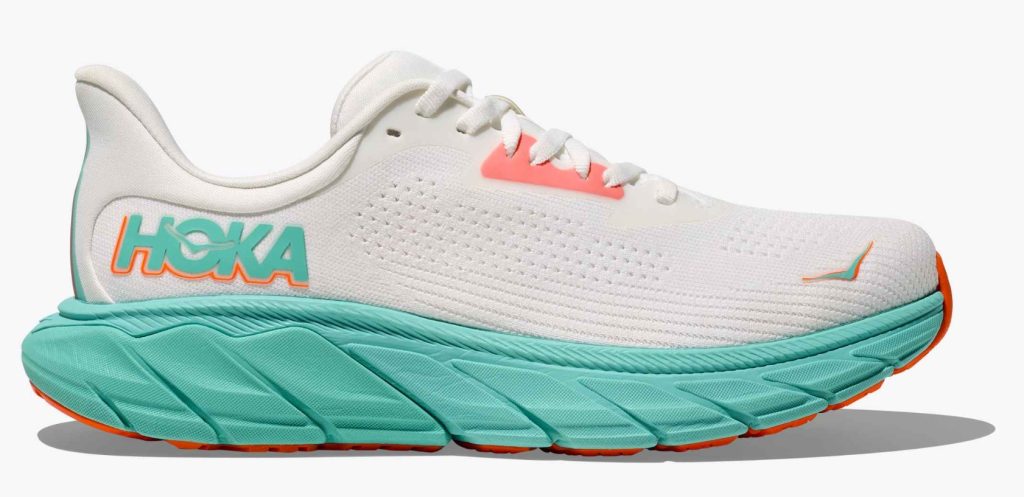
Specifications:
- Weight: 9.9 oz (men’s) / 8.1 oz (women’s)
- Stack Height: 34mm heel / 29mm forefoot
- Heel-to-Toe Drop: 5mm
- Midsole: EVA with J-Frame technology
- Upper: Engineered mesh with midfoot H-strap
Key Features:
- J-Frame™ technology provides guide rails-style support
- Early-stage meta-rocker for smooth transitions
- Anatomical Achilles construction reduces friction
- Flat-knit upper offers improved breathability
- Strategic rubber placement for durability in high-wear areas
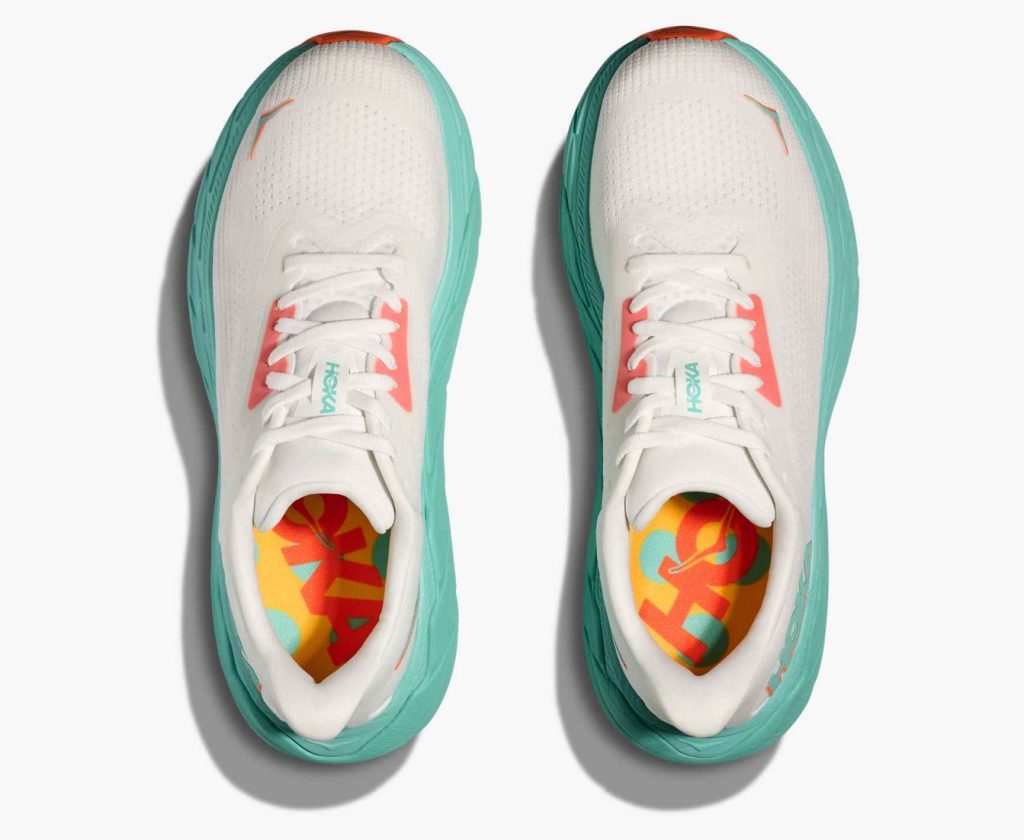
Pros:
- Delivers stability without feeling rigid or controlling
- Remarkably lightweight for a support shoe
- Maintains Hoka’s signature cushioned ride
- Accommodating fit through the midfoot and toe box
- Supports overpronation without overcorrection
Cons:
- Some may find the arch support insufficient for severe overpronation
- Less responsive than neutral Hoka models
- Limited color options compared to other lines
The Arahi 7 exemplifies Hoka’s intelligent approach to stability. Rather than using a medial post (the traditional method), the J-Frame™ technology employs a firmer foam density along the medial side and wrapping around the heel. This creates a more natural guiding effect rather than forcefully correcting your gait.
During my testing on both road and treadmill, the Arahi 7 delivered consistent support without the clunky feel often associated with stability shoes. At 9.9 ounces, it’s considerably lighter than most competitors in the stability category while maintaining Hoka’s signature cushioned ride.
5. Hoka Transport: Best Crossover Running/Walking Shoe
For those seeking a versatile shoe that transitions seamlessly between running errands and casual runs, the Hoka Transport offers exceptional versatility.
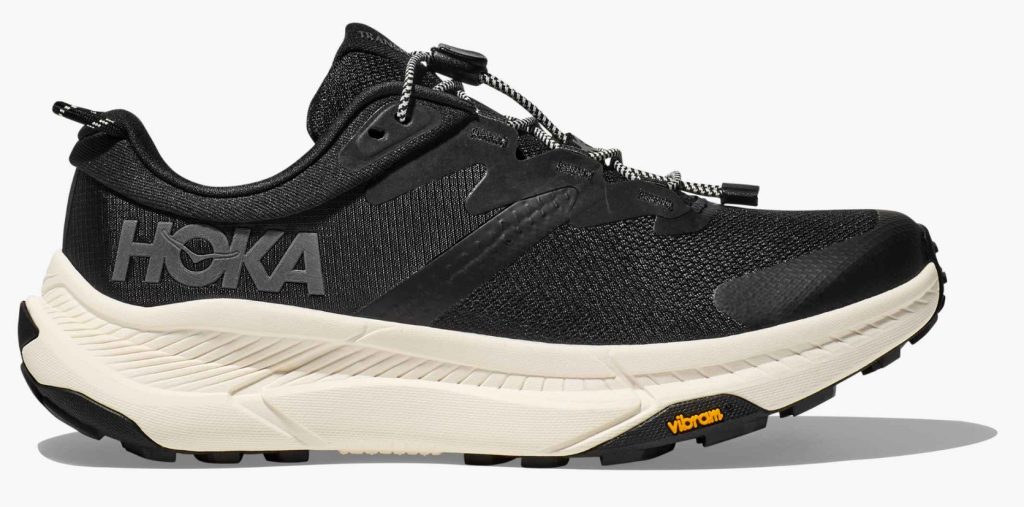
Specifications:
- Weight: 11.2 oz (men’s) / 9.1 oz (women’s)
- Stack Height: 37mm heel / 32mm forefoot (men’s)
- Heel-to-Toe Drop: 5mm
- Midsole: Compression-molded EVA
- Upper: Durable Cordura fabric
Key Features:
- Toggle lacing system for quick on/off convenience
- Vibram Megagrip outsole for all-surface traction
- Cordura upper offers exceptional durability
- Cushioned EVA midsole for all-day comfort
- Reflective elements for low-light visibility
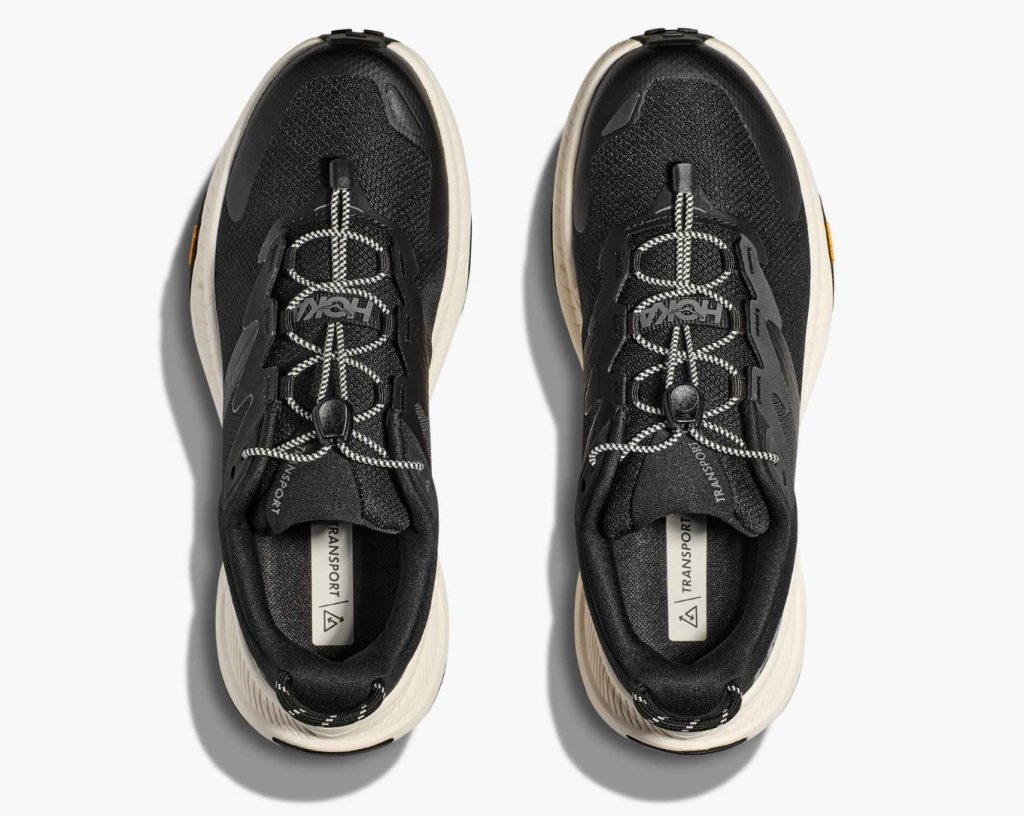
Pros:
- Exceptional versatility for various activities
- Superior traction on multiple surfaces
- Durable construction that holds up to daily wear
- Quick-toggle lace system is convenient for everyday use
- Sustainable materials (30% sugarcane-derived EVA)
Cons:
- Heavier than dedicated running shoes
- Firmer ride than other Hoka models
- Less breathable than mesh-based running shoes
The Transport stands out in Hoka’s lineup as a true crossover shoe, blending running performance with lifestyle versatility. The Vibram outsole provides exceptional grip on both wet and dry surfaces, while the Cordura upper offers durability that far exceeds typical running shoes.
During my testing across various environments, I found the Transport excelled for mixed-activity days – running commutes followed by errands, light trail excursions, and travel. The toggle lacing system is particularly convenient for quick transitions, and the shoe’s slightly firmer ride (compared to other Hokas) provides stable support during prolonged standing.
How to Choose the Best Hoka Running Shoes for You
With so many excellent options among the best Hoka running shoes, selecting the right pair comes down to understanding your specific needs:
- Consider your foot type: Neutral runners can choose from Clifton, Bondi, or Mach, while overpronators should look at Arahi or Gaviota.
- Assess your cushioning preference: From the maximum softness of Bondi to the balanced feel of Mach, Hoka offers varying degrees of cushioning.
- Think about your primary use: Recovery runs, daily training, speed work, or racing will all influence which model is best for you.
- Factor in your weight: Heavier runners often benefit from the additional support and cushioning in models like Bondi or Gaviota.
- Consider your terrain: While this guide focuses on road shoes, Hoka also makes excellent trail options if you venture off-pavement.
Need specific sizing advice based on your foot shape? Contact me on WhatsApp for personalized recommendations!
FAQs About Hoka Running Shoes
Are Hoka shoes good for flat feet?
Yes! Hoka offers several models ideal for flat feet. The Arahi 7 with its J-Frame technology provides excellent support for those with flat arches. The Gaviota 5 (not in our top 5 but worth mentioning) offers even more substantial support for severe overpronation often associated with flat feet.
How long do Hoka running shoes last?
Most Hoka running shoes typically last between 300-500 miles, depending on running style, surface, and body weight. Their substantial cushioning often extends their effective lifespan compared to minimalist alternatives. The outsole durability has improved significantly in recent models, addressing a previous weakness in the brand’s lineup.
Are Hoka shoes worth the price?
While Hoka shoes represent a significant investment ($140-$175), their durability, performance benefits, and joint-protecting cushioning offer excellent value for serious runners. Many users report reduced recovery time and fewer injuries after switching to Hoka, potentially offsetting the initial cost through fewer physical therapy bills and more consistent training.
Can I use Hoka running shoes for walking?
Absolutely! Many Hoka models excel for walking, particularly the Bondi 9 and Transport. Their exceptional cushioning reduces fatigue during prolonged standing or walking, making them popular among healthcare workers, retail employees, and travelers. The meta-rocker design also promotes natural walking mechanics.
Do Hokas run true to size?
Most Hoka models run true to size in length but tend to have a medium-to-narrow fit through the midfoot. The Clifton 9 and Bondi 9 offer more accommodating toe boxes than previous generations. If you have wide feet, consider their “wide” options, which provide additional volume throughout the shoe.
Conclusion: Finding Your Perfect Hoka Running Shoes
The best Hoka running shoes combine innovation, comfort, and performance in a way few other brands have achieved. From the versatile Clifton 10 to the max-cushioned Bondi 9, the responsive Mach 6 to the supportive Arahi 7 and Gaviota 5, there’s a Hoka model engineered to match nearly every runner’s needs.
After years of testing countless running shoes, I’m consistently impressed by how Hoka continues to refine their offerings while staying true to their founding philosophy of “flying over the Earth” with maximum cushioning and minimum weight.
Have questions about which Hoka model might work best for your specific needs? Need detailed fit advice or comparisons between models not covered here?
Reach out to me on WhatsApp for personalized recommendations from someone who has tested the entire lineup extensively!I’m always happy to help fellow runners find their perfect match in the ever-expanding world of Hoka running shoes.




